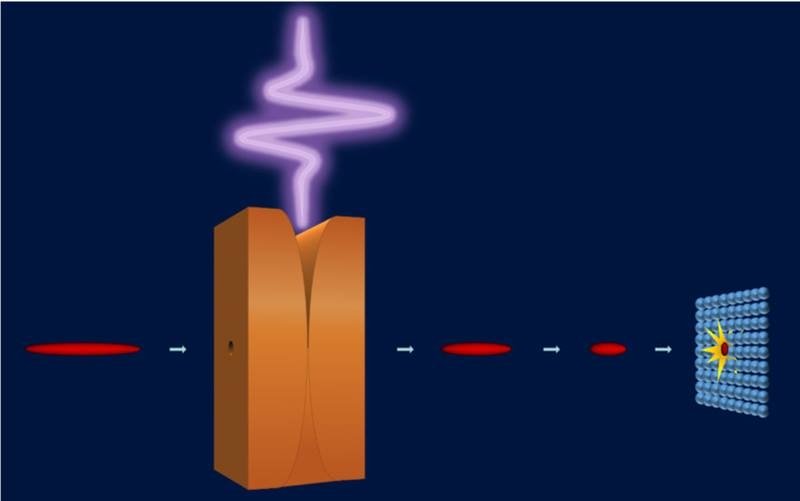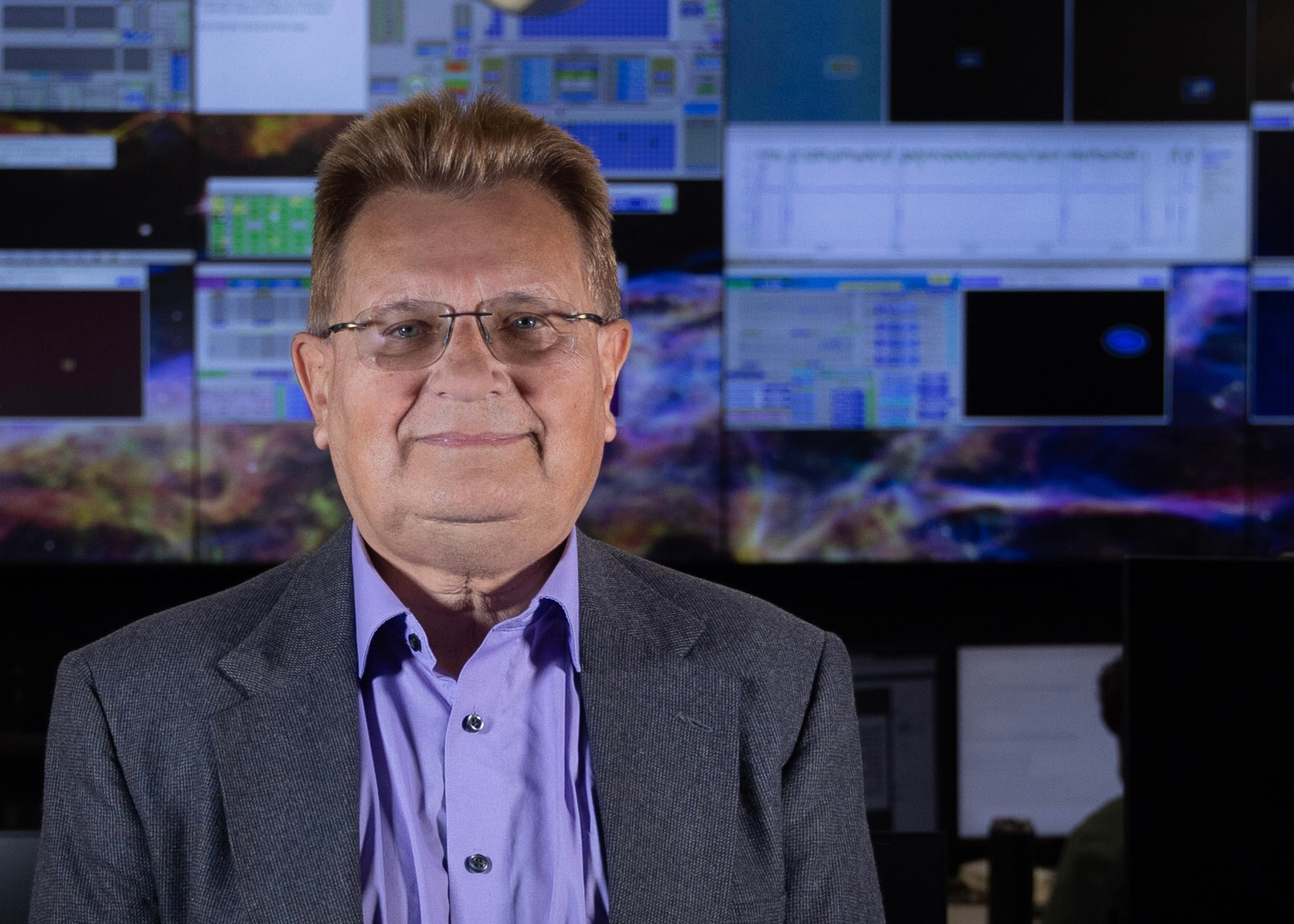The Science
Scientists can use beams of electrons to study the properties of materials. For example, they can learn about the behavior of subatomic particles and molecular or atomic structure of a material. Shorter electron beams produce higher-resolution views of these properties. To make electron beams shorter, the electrons at the tail of the beam need to catch up to the head of the beam. Scientists can do this by giving the electrons at the tail of the beam a little extra energy compared to electrons at the head, a so-called “energy chirp.” Scientists have now shown that the electric field of a terahertz (infrared) laser pulse can give the electrons this energy chirp as they cross the tiny gap at the heart of a specially designed copper structure. This chirp nudges them towards the optimal time of arrival at the target material.
The Impact
This is the first time that scientists have shown this compression technique for electron beams. The technique not only reduces the pulse length of electron beams, but also stabilize the time-of-arrival of each beam produced by the repeating shots of the accelerator system. For measurements made with the electron beam, these two factors, electron beam pulse-length and time-of-arrival, determine the timing resolution. This is much like the shutter speed of a camera and the time stamp of each image. This terahertz (THz) laser-based technique could ultimately produce electron beams short enough to capture crisp images of electron and proton motion within molecules. This ability would open a new window into the atomic world.
Summary
Scientists can use electron beams to study material properties through techniques like ultrafast electron diffraction (UED). In UED, electrons hit a material sample then scatter to form a pattern that tells researchers about the internal structure of that sample. For UED measurements of materials that change over time, decreasing the length of the electron beam reduces the window of time in which the beam scatters off the sample, making it appear frozen in time during the snapshot. With a beam that is compressed to shorter than 10 femtoseconds (or 10 quadrillionths of a second), researchers can map the motion of electrons and protons within molecules in sequential shots.
The copper compressor design presented here is sufficiently compact to fit in the palm of a hand. This small size is possible because of the short wavelength at THz frequencies. The gap in the compressor where the THz pulse actually interacts with the electron beam is only about as wide as a human hair. To make the THz pulse, scientists use the same laser that produces the electron beam in the electron source. This approach improves cost efficiency and ensures that the THz pulse is precisely synchronized to the electron beam. Because of this synchronization, the energy exchange between the THz field and the electron beam results in not only the energy chirp required for beam compression, but an overall energy shift that corrects for any timing jitter. Until recently, THz sources have not provided sufficient field strength to effectively manipulate electron beams. This compressor design uses special features to harness the available THz pulse energy as efficiently as possible.
Funding
Research reported in this publication was supported by funding from the Department of Energy (DOE) Office of Science High Energy Physics and Basic Energy Sciences programs, and is implemented at the Linac Coherent Light Source, a DOE Office of Science user facility.




